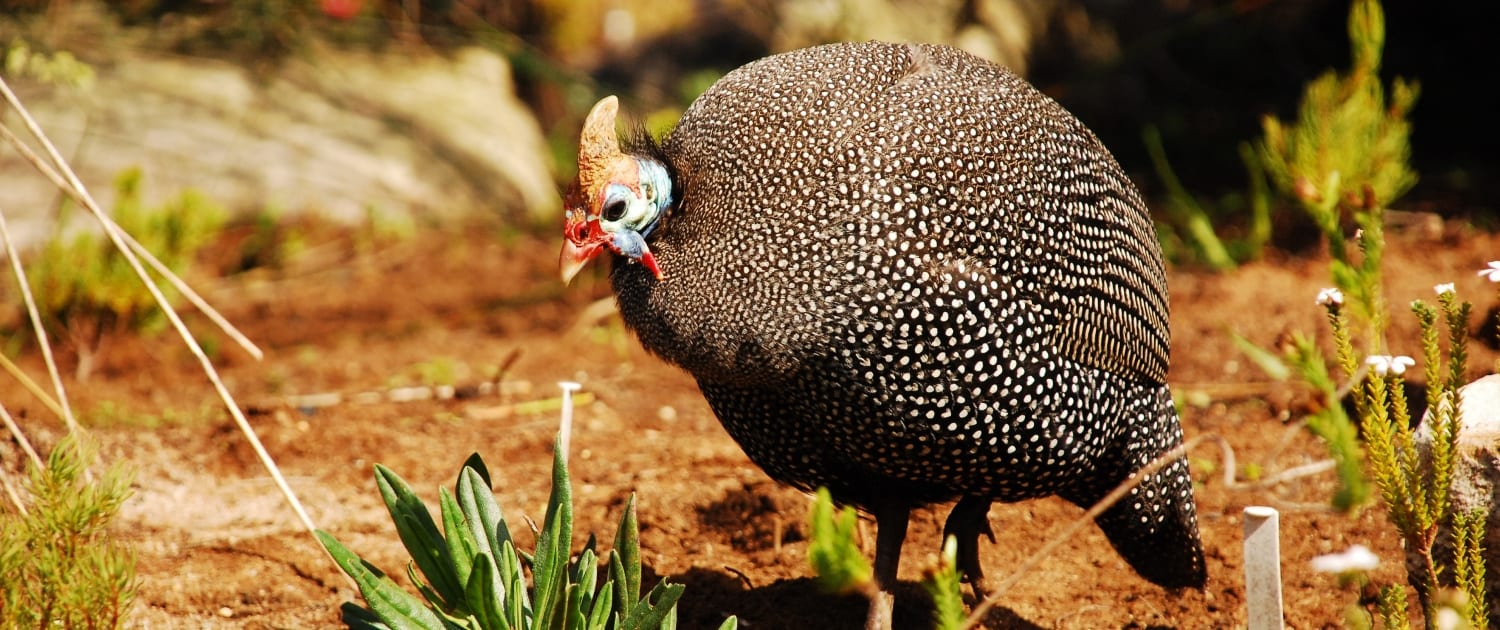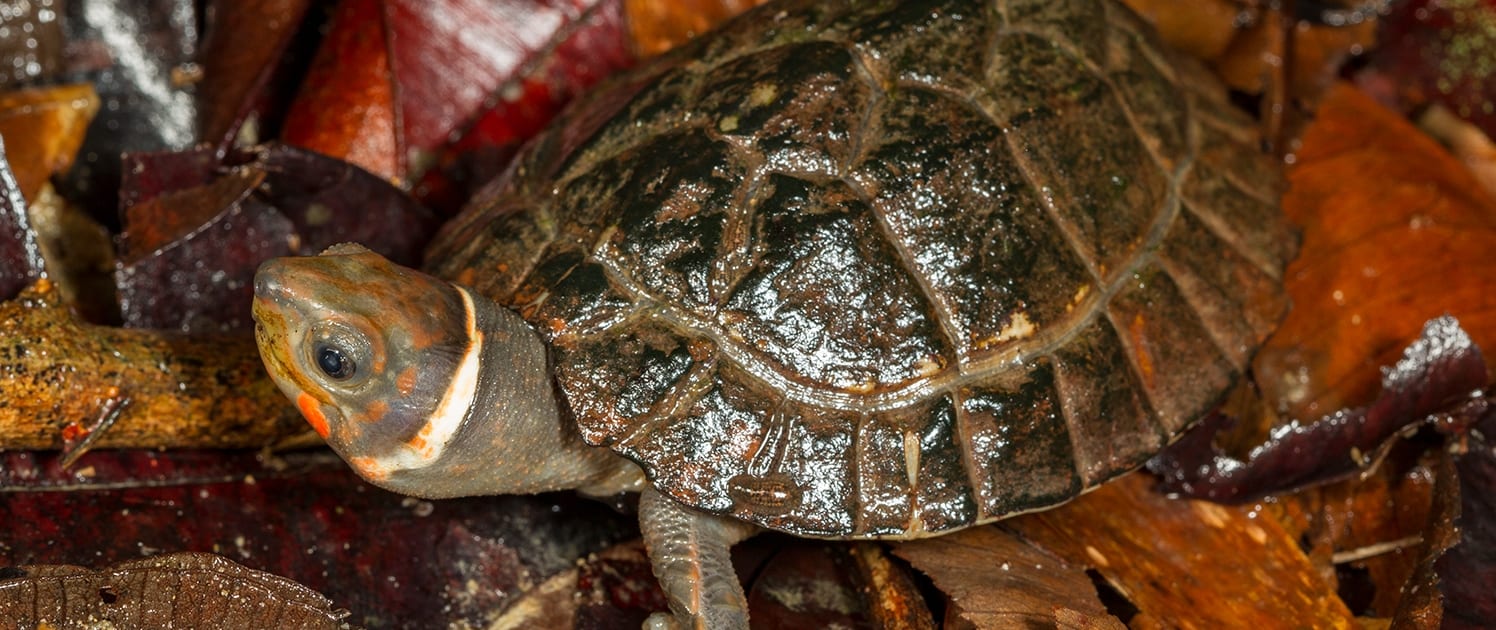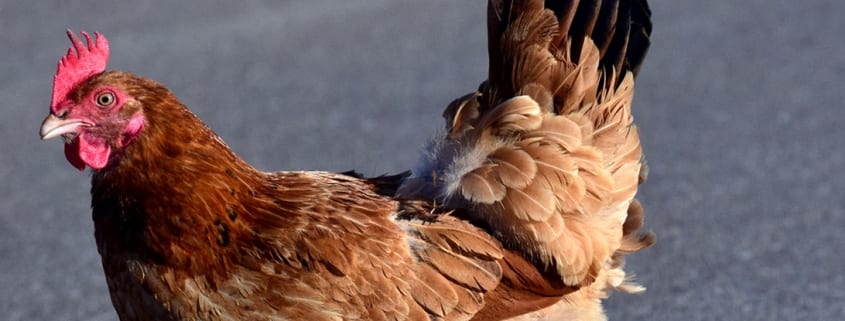Conservation Basics: Why Did the Chicken Cross the Road?
Rainforest Trust’s work to protect habitats for threatened species is grounded in cutting-edge conservation science. But in this series, we explore the basics of conservation science and how they inform Rainforest Trust’s scientists.
We know why the chicken crossed the road: to get to the other side. But what was on the other side?
The proverbial chicken crossed the road, motivated by its desire to get to the proverbial “other side.” We assume the chicken made this decision of its own volition and made it with purpose. Like all heroes, The Great Explorer Chicken had a choice: stay put or face the unknown. And, like all heroes, the chicken chose the unknown, battling dangers of the road to seek the dream of the other side’s brighter tomorrow. To remember this inspiring feat, we’ve etched the chicken’s infamous bravery into the annals of history.
I first reflected on the motivations of the iconic chicken after witnessing a Helmeted Guineafowl cross a road between Mto wa Mbu and Arusha in northern Tanzania. A Helmeted Guineafowl, while not a chicken, is chickenesque. I was zipping along the road in a car. The guineafowl was in the roadside brush until, like a scene out of Frogger, it ignored the oncoming hazards moving perpendicular to its trajectory and bolted.

The Helmeted Guineafowl: A Chickenesque Species
But why?
On the north side of the road were buildings, homes and a sufficiency of cows: a human-dominated landscape. On the south side was a private ranch, managed for both wildlife and cattle. Cattle grazing occurred on the outskirts of the property and wildlife abounded in the center, including guineafowl.
As the guineafowl crossed from protected area to unprotected area, it passed from one habitat to another habitat. It did not cross from habitat to “not habitat.” Habitat is the space where living things live, so everywhere is habitat because living things live everywhere. Just as the Serengeti is habitat, the tracks of the New York City subway are habitat. In fact, subway tracks are suitable habitat for the Brown Rat.

“Habitat”
But the Brown Rat did not evolve on subway tracks. Nevertheless, it still finds those rails a reliable place to settle down after a long day of pizza-nabbing. Each species relies on a unique combination of habitat factors to live, with some species more discerning than others. The Brown Rat, we might conclude, is not a picky creature. Some species of tropical montane hummingbirds, who only live on a few isolated mountaintops in Central America, are perhaps more choosy.
Habitat types differ in geology, climate (including temperature and precipitation), geographic location, water chemistry and soil properties. Different communities of plants and animals can also create different habitats; some species may rely on another species to survive. Some wasps only lay eggs in fig trees, some ants rely on Acacia trees to colonize and some people just, like, can’t live without their dogs. There is no fixed number of habitat types, only a lengthy list of factors to describe habitat. Each combination (cold, wet and mountainous; warm, dry and mountainous; temperate, marine and sea-level; etc.) is a unique habitat. If you add another factor to the list, the differentiation grows.
The species-habitat relationship is a major tenet of Rainforest Trust’s work to help protect the specific habitats endangered species rely on to survive. Take, for example, Rainforest Trust’s project with the Critically Endangered Palawan Forest Turtle. The entire species relies on lowland swamp forest habitat in one corner of the Philippines. Without this habitat in this location, the entire species will go extinct. If you want to protect gorillas, you need to understand where gorillas thrive. If you want to protect Leafcutter ants, you need to understand where Leafcutter ants thrive. Same goes for pythons, tuna, sugar maples and every other species on the planet.

The Palawan Forest Turtle. Photo courtesty of N. Cegalerba and J. Szwemberg.
As Jeff Goldblum said in my favorite movie: “Life, uh, finds a way.” While terse, Michael Crichton’s punchy take is a decent one-line description of the entire field of biology. Life is everywhere and, uh, finds a way. There are microbes that rely on the salty water of the Dead Sea and spiders that only live on top of Mt. Kilimanjaro. Anywhere on Earth, we should ask, “What lives here?” not, “Can anything live here?”
So why, dare I ask, did the Helmeted Guineafowl cross the road?
Guineafowl rely on habitat traits to survive, and we can assume that both sides of the road, being adjacent, contained the necessities of guineafowl life. The south side was managed for wildlife, ensuring food availability and nesting space, while the north side was not. On the south side of the road, the guineafowl would compete with other guineafowl for resources; on the north side of the road, the guineafowl might compete with domestic chickens. Due to differences in anthropogenic influence, the plant communities, insect communities and soil properties might be different on either side. Two places on Earth, the south side and the north side of one road, vary only in minutiae, but important minutiae.
But the guineafowl and I had different knowledge of the situation. I knew which side might be empirically better for the guineafowl. The guineafowl understood the situation on the ground. Maybe there wasn’t enough food in its immediate vicinity. Maybe another guineafowl scared it. Maybe a Bat-eared Fox was trying to eat it. Maybe it was venturing off to live somewhere new. Maybe it was training for the Guineafowl Olympics. The guineafowl didn’t know the other side held, statistically, fewer opportunities for success. The guineafowl only knew what it knew in that definitive moment and, unlike me, knows what happened in the seconds, hours, days, months and years afterwards.

Our hero must make a decision.
So why did the guineafowl cross the road? After putting the pieces together, we can determine that the scientific, definitive answer is: Who knows? As much as we try to understand the species-habitat relationship, we’ll never be able to predict everything. For conservation, we do the best we can to understand every detail of each side of the equation (species and habitat) and plan for what we know, hoping the wildlife go along with the plan. I don’t know why a guineafowl runs across a road, risking its life.
Maybe the guineafowl just wanted to get to the other side.





